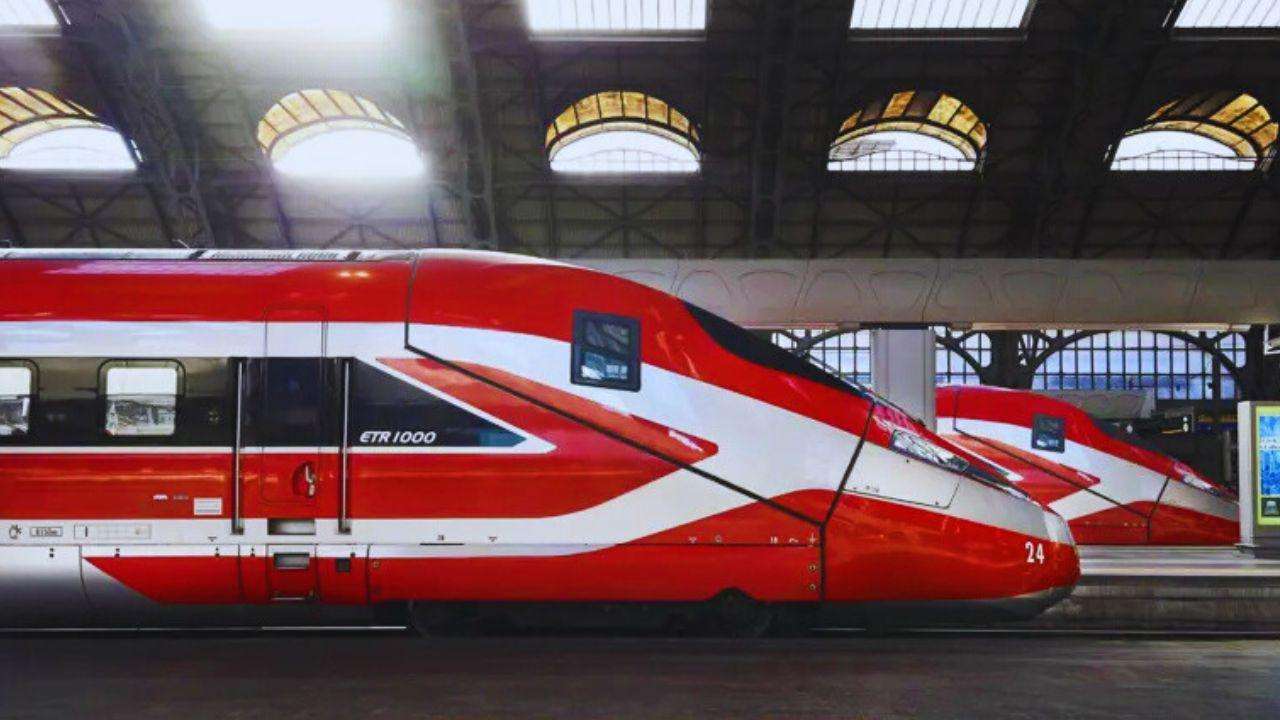Italy’s state railway, Ferrovie dello Stato Italiane (FS), has unveiled plans to operate high-speed train services between London and Paris by 2029, as part of a €1 billion (£860 million) investment aimed at expanding cross-border rail connections through the Channel Tunnel and beyond.
FS intends to deploy trains based on its successful Frecciarossa (“Red Arrow”) high-speed services already in use across continental Europe. The initiative is designed to introduce competition to Eurostar, the current sole operator on the London-Paris route. In addition to linking the UK and France, FS is considering extending services further to Lyon, Marseille, and Milan, and is also evaluating the possibility of reopening Ashford International in Kent, a station that has remained out of service since Brexit.
Demand for international rail travel has surged in the aftermath of the Covid-19 pandemic. Eurostar’s London-Paris route is frequently booked out, with last-minute one-way fares reaching £235, significantly higher than air travel alternatives like easyJet, which can be over £100 cheaper. However, passengers may soon benefit from more affordable options thanks to increased competition.
FS CEO Stefano Antonio Donnarumma emphasized the importance of high-speed rail for sustainable and efficient travel. He stated that expanding service along key European corridors reflects an investment not just in infrastructure and innovation, but also in the future of green mobility. “More competition,” he said, “will help build a more efficient and customer-focused industry that can serve as a genuine alternative to flying.”
Currently, the rail link between London and the Channel Tunnel operates at just 50% capacity, according to London St Pancras Highspeed, the company managing the line. Its CEO, Robert Sinclair, welcomed FS’s plans, noting that greater competition would mean more choices, lower fares, new destinations, and would support a modal shift from air to rail, helping reduce transportation emissions.
FS is working with Evolyn, a Spanish start-up that had previously announced plans to run services on the route as early as 2025. Other players such as Virgin Group, led by Sir Richard Branson, and a start-up named Gemini have also expressed interest. However, Susanne Kries, co-author of Europe by Rail, predicts that FS and its Frecciarossa trains will be the first to challenge Eurostar’s dominance.
FS’s announcement follows two key developments in recent weeks: London St Pancras Highspeed introduced infrastructure charge discounts for new operators, and the UK Office of Rail and Road (ORR) released a study concluding that some maintenance capacity could be allocated to new competitors at Eurostar’s Temple Mills depot in East London.
In response to rising demand, Eurostar is also expanding. A spokesperson highlighted the growth in sustainable travel and confirmed the company’s goal of reaching 30 million annual passengers, backed by a €2 billion (£1.72 billion) investment in up to 50 new trains.
The idea of a longer rail network from London through Paris to Lyon, Avignon, Marseille, Turin, and Milan has excited rail travel enthusiasts. Mark Smith, the expert behind the Man in Seat 61 website, called the potential route “quite exciting.”
However, some industry experts are skeptical about the proposed 2029 start date. Adam Parkinson, founder of the GoLink Advisory Group, noted that operating trains through the Channel Tunnel requires specialized rolling stock that complies with strict safety standards, including fire and evacuation protocols. He argued that the earliest a new entrant could realistically launch would be the early 2030s, due to the lengthy process of designing, funding, building, and certifying new trains.
Even if an order for new trains was placed in 2025, Parkinson estimates that operations could not begin before 2032, factoring in current production backlogs and regulatory approvals.
FS has also mentioned its intention to evaluate the feasibility of restoring services to Ashford International, one of two Kent stations—along with Ebbsfleet International—that Eurostar mothballed after Brexit.
The move by FS reflects broader trends in European rail. In Spain, for example, state operator Renfe competes with Ouigo (owned by SNCF of France) and Iryo (part-owned by FS) on routes such as Madrid to Barcelona, which covers a distance similar to that of London-Paris. Yet fares for last-minute travel on that route are typically around €40 (£34)—a stark contrast to the prices currently seen on Eurostar.
As the race for high-speed rail dominance across Europe heats up, the promise of more affordable, accessible, and sustainable travel could finally be within reach for passengers on both sides of the Channel.








.svg)


